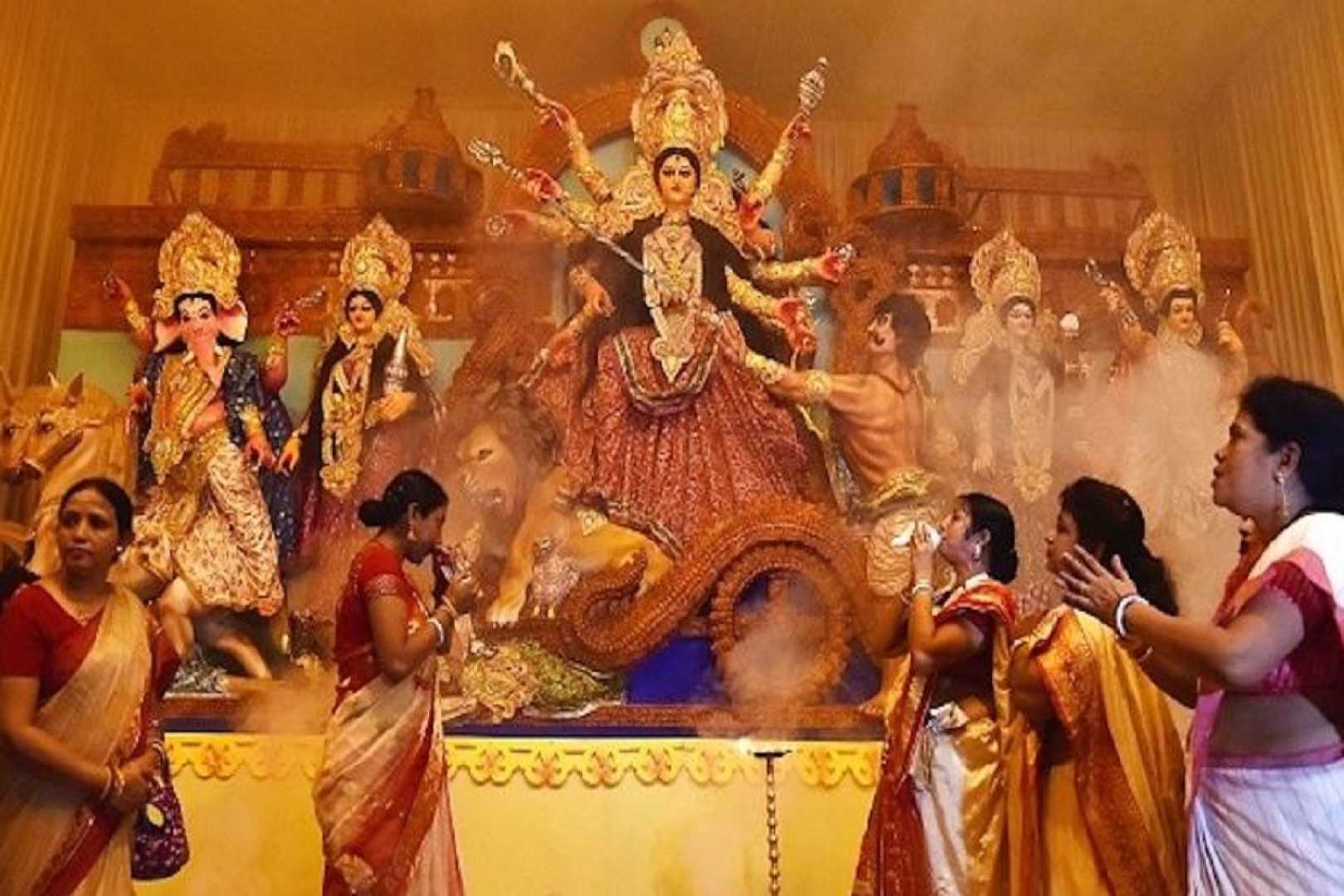World
Celebrating Durga Puja: A Glimpse into Diverse Traditions Across India

Durga Puja, a prominent Hindu festival revering Goddess Durga, is celebrated uniquely across various states in India. The festival, which coincides with the end of the nine-day Navratri, witnesses diverse rituals and traditions, reflecting the rich cultural tapestry of the country. In 2024, as Navratri draws to a close, celebrations are in full swing in every corner of India, each state bringing its own cultural flavor to this auspicious occasion.
In Uttar Pradesh and Bihar, the culmination of Navratri is marked by honoring young girls, considered representations of the goddess, by offering them food and gifts. Holy chants from the ‘Durga Saptashati’ are recited, and special rituals are conducted at revered temples, including the Maa Vindhyavasini Temple in Mirzapur and the Maa Annapurna Temple in Varanasi.
West Bengal is renowned for its grand and thematic Durga Puja pandals, which become significant attractions for residents and visitors alike. The celebrations often include elaborate installations and idols of Goddess Durga alongside other deities such as Ganesh, Kartikeya, Saraswati, and Lakshmi. In cities like Kolkata, the festivities reach a crescendo with dramatic processions and cultural activities.
In Gujarat, Navratri is synonymous with the Garba, a traditional dance enjoyed by all ages, while devotees maintain fasts and conclude festivities by honoring young girls with gifts. Prominent temples like the Amba Devi Temple in Bhavnagar are focal points for these events.
In Tamil Nadu, the festival’s last three days are dedicated to Durga, Saraswati, and Lakshmi. The ‘Golu‘ doll display tradition is a unique feature, where handcrafted dolls, passed down generations, are meticulously arranged and exhibited.
Punjab’s Navratri celebrations manifest through continuous temple rituals and observances over nine days, culminating with offerings to young girls. Specific practices include the dressing of young boys as langurs in gratitude to the deity for fulfilled wishes, especially at the Barah Hanuman Temple in Amritsar.
Meanwhile, in Andhra Pradesh, the festival, known locally as ‘Bathukamma Panduga,’ focuses on women’s groups creating circular floral arrangements that are eventually immersed in water, symbolizing prayers for prosperity and marital happiness.
The tribal region of Bastar in Chhattisgarh showcases one of the longest celebrations, stretching up to 75 days. Traditional processions feature intricately crafted effigies of deities, such as those seen at the revered Danteshwari Temple in Jagdalpur.
Mysore in Karnataka becomes a spectacle of lights, honoring Goddess Durga’s mythological victory over the demon Mahishasura. Known as Mysore Dasara, the festival is marked by a grand procession thoroughfare brightly illuminated with thousands of bulbs.
Maharashtra echoes Gujarat’s enthusiasm for dandiya dance, with additional traditions such as the burning of Ravana effigies on Vijayadashami. Women exchange haldi and kumkum, celebrating friendships and good fortune.
Finally, in Himachal Pradesh, the celebrations commence when the rest of India concludes theirs. The region, rich in ancient temples dedicated to goddess deities, observes unique regional customs, with grand rituals marking the start of Kullu Dussehra.












